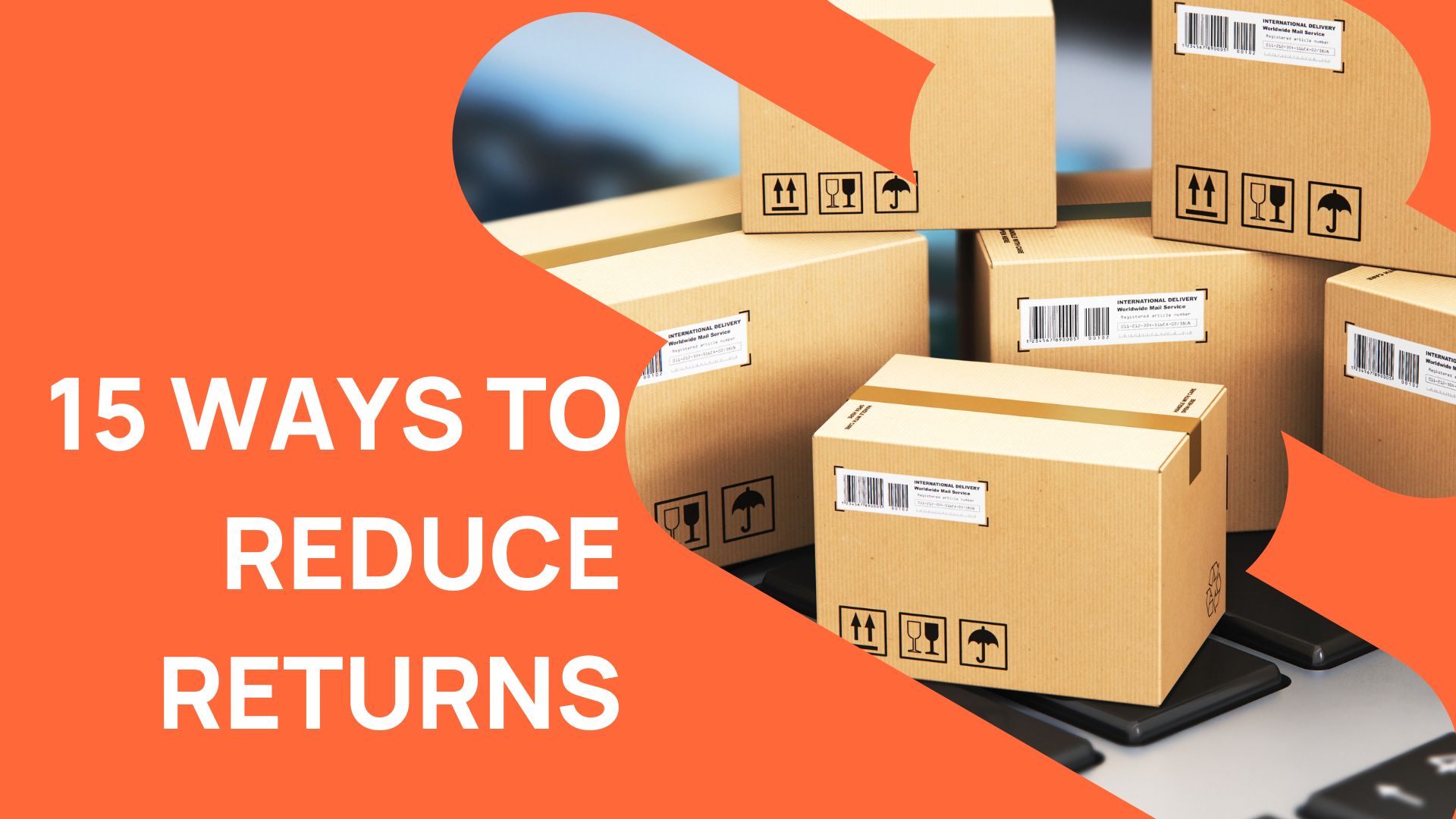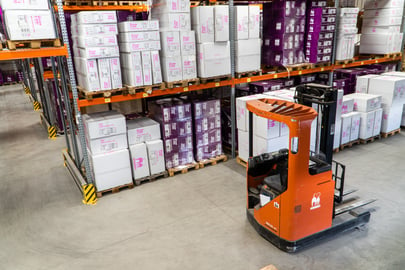Cold Chain Logistics: Management Challenges & Solutions
The supply chain is a term used to describe all the components required to transport goods from beginning to end, from production to the end...

The most important part of any eCommerce business is the ability to convert visitors into buyers. This requires a solid understanding of your audience and the best way to reach them.
In addition, you must make sure that your website is easy to navigate and that all information is presented clearly, driving consumers to shop and ultimately purchase items.
A key element to successfully running an eCommerce store is strategically preparing for and professionally handling returns. All eCommerce stores will incur returns, but you can decrease the percentage of returns and make people returning items into fans of your brand by strategically preparing for it. Returns are a fact of life. In fact, according to research conducted by the National Retail Federation, consumers returned $17.5 billion worth of merchandise in 2017 alone. This figure represents a 3.4 percent increase from previous years. In this article, we cover fifteen ways to decrease returns.
Sizing Guides and Fitting Tools
Free Shipping Minimuim Cart Value
The product description should contain all the necessary information about the product. It should include the size, color, material, price, availability and any special features. Make sure that the product description is easy to read and understand.
Product images should properly display the item without any editing that distorts the color. Many shops include details about the models measurements and what size she is wearing to give buyers more insight into which size would be best for them.
In addition, some brands show the item on multiple body types to provide more examples of how the product fits. Additionally, as video content becomes more consumed, some stores are beginning to add videos of each product – this can be time-consuming and costly. Still, the return on investment is highly likely as it will help decrease returns.
In addition to great images providing sizing guides and fitting tools, when applicable, will help ensure customers order a product that fits. Some shops think it is not necessary as their items are not worn, but we advise all stores ad sizing to their product description.
Size guides for household items can be included in the images of the product and should display the measurements of the item to give buyers a clear depiction of the item.
Sharing public reviews is another great way to help decrease the number of returns. Consumers not only trust reviews and it makes a product more desirable knowing others have loved the product but reviews are also a great way to indicate how an item fits. Many reviews in the clothing space indicate whether an item ran a bit smaller or larger than comparable items.
The best reviews contain images and/or videos – as these let buyers see how other people style or use a product. If you want more customers to review your products, start by sending an email asking for them to rate the product after it arrives.

The second kind of review brands should put in place is when a customer returns an item. Although you don’t want to share negative reviews, you should always try to get your customers’ feedback on why they return your product. This will help you understand what you need to do to reduce returns. In order to collect customer feedback about returns using a standard NPS survey, you first need to know how many returns you have per month. Then, you can calculate the average rating for each reason for return. After calculating these averages, you can compare them to the overall average rating. If the overall average rating is lower than the average ratings for all the reasons for return, you can assume that there is room for improvement.
Consumers frequently turn to eCommerce when they need an item for an upcoming event or celebration. If the item doesn’t come in time for that, many buyers will go to brick-and-mortar to get another option, resulting in – you guessed it – a return.
To avoid returns for speed of delivery, we suggest the following:
A common reason for returns are damage during transit, incorrect product selection, and wrong size. It’s important to make sure your products are packaged properly so they don’t get damaged during shipping.
The most important thing when shipping goods is to make sure that the packaging is sturdy enough to withstand the rigors of transport. This includes packing fragile items in bubble wrap and using strong boxes. It’s also worth checking if there are any special requirements for the product itself. For example, some countries require certain types of packaging for foodstuffs.
The best way to reduce returns on your eCommerce site is to increase the time period during which a customer can return a purchase. Initially, this might seem counterproductive, but many people rush to return an item if they are not in love with it – knowing they are approaching the deadline. Extending that time gives the customer more time to think about whether they want to keep the item, and if not, gives them the chance to forget about it or regift the item.
As certain products continue to sell successfully, you will want to restock those in larger quantities, while other items may sit in your warehouse for a long time. Items that have not sold well can be discounted and marked as final sale (meaning no returns are slowed). Although this should not be done for any best sellers, it is a great way to ensure your warehouse can empty unwanted products without the threat of returns.

Ensure your product is high quality will also help decrease returns. Items that break in shipment, don’t match the description or feel cheap compared to the purchase price are often returned. The quality control process involves checking each item individually. This ensures that everything is packed correctly and shipped on time.
Make sure that you have a great fulfillment team that takes a moment to inspect that the product is in good condition before it is sent out. This is especially critical for smaller eCommerce sellers when they are starting out and have limited inventory.
The best way to provide customer service is through a combination of phone calls, emails, and live chats. These three channels should all be used to ensure that customers receive the information they need when they need it. Live chat is particularly useful if there is a problem with a product or service. It allows you to resolve any issues immediately and avoid having to return the item. By using multiple channels and ensuring customers can communicate with your team you can avoid a consumer jumping to return a product if they don’t understand it.
The first way to decrease “serial returners” is by putting into place sizing guides and tools. Some people will be scared an item will sell out and if they are not confident which size they are they will purchase multiple of the same item in various sizes. By offering guides, images, and reviews you will decrease a customers need to do
If you have implemented those things and still have people who consistently return items they purchase you can set up your system to flag customers who have a higher number of returns and send them an email explaining a change to a return policy putting into place only up to a certain number of returns are free (or a percentage of orders made) and after that a customer must pay for shipping the item back.
Some companies, such as ASOS have actually blocked specific customers from purchasing with them when they see a said serial returner.
To combat returns, consider offering free shipping on orders over a certain amount (we recommend this amount to be something that encourages a minimum of 3 items). This way buyers are spending more to “earn” free shipping. Encouraging people to buy more than one product also reduces the likelihood of returns.

Free shipping is an attractive thing to buyers and can be strategically used to get your ACV (average cart value) to increase.
People often feel bad about returning products, so they’ll try to find a way around it. Offer a generous exchange policy, where they can get a new product for free – or a credit to the store. You are still dealing with the cost of a shipment coming back, but at least you know that customers will purchase again and probably end up adding an additional item to their cart.
Everyone wants to know what the status of a package is. Research shows the average customer checks in on a parcel shipment 7 times between order to delivery. The best way to inform your customers about your products is through email marketing. This allows you to send out messages to your customers whenever you want, which makes it easy to keep them informed about their shipments and encourage them to make new purchases without feeling pushy. You can even use email marketing to remind customers about special offers and discounts.
This might sound counterproductive, but there are reasons brands like IKEA and Nordstrom have such a loyal customer base. Generosity builds trust that leads potential customers further down the path to conversion. A majority of customers won’t purchase from a brand if they don’t offer to pay for return shipping and if a consumer doesn’t notice this beforehand and has a poor experience, they will share that with their friends or, even worse – online. Creating a poor public image for your company and decreasing the number of customers who shop with you.
Live chat allows you to interact directly with your customers. It’s a great way to build trust and rapport with your audience. You can use live chat to answer any questions your customers may have about your products and services. It’s also a good idea to set up a schedule for when you’ll be available to answer questions.

This presents an easy way for customers to ask questions before purchasing or for your team to direct someone looking to return to exchange instead.
It may seem like common sense, but many retailers don't take the time to think about how they will handle returns. They just assume they'll get through them without any problems. However, if you're not prepared, you could end up losing money on each return.
By evaluating your current returns process and implementing the above tips and tricks, you can see a decrease in return rates. The first step to decreasing returns is to evaluate your current returns process and implement any of the above helpful tips that you currently do not do. Now you can be sure you always have a plan in place for how you will handle returns.

The supply chain is a term used to describe all the components required to transport goods from beginning to end, from production to the end...

A smart warehouse is a large building where raw materials and other consumer goods are stored using machines, computers, comprehensive software, and...

Direct-to-consumer (DTC) fulfillment is a strategy that helps brands sell and deliver their products directly to customers more efficiently while...